What Does a Chipmunk Eat
Chipmunks are technically rodents, but they are such a joy to watch that many people want to keep them as pets. If you want to take care of one, you need to feed them the right diet to keep them healthy and happy. Here is what you need to know about their diet.
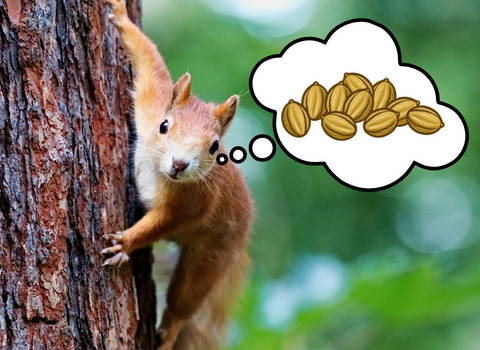
What Do Chipmunks Like to Eat
Chipmunks belong to the squirrel family and can stay anywhere as long as there are trees. There are more than 25 chipmunk species. All varieties can be found widespread across North America, except the Siberian chipmunk which is also found in northern Asia. The word chipmunk means red squirrel in the Odawa language. They are also called ground squirrels, striped squirrels, and timber squirrels.
Since they live in various geographies, you cannot expect them to eat the same chipmunk’s diet. Some species like the Eastern chipmunk are omnivores that will eagerly climb trees to look for bird eggs. Other species like the Hopi chipmunks in Monument Valley and western Colorado are mainly herbivores that like Juniper berries.
But what do they eat in the wild? Chipmunks have a varied diet in the wild. They eat nuts and seeds, fruits, fungi, buds, grains, new plant shoots, and fresh grass. Apart from vegetables, this wild animal also feeds on earthworms, small frogs, bird seeds, small birds, bird eggs, small insects, snakes, arthropods like centipedes and millipedes, and other rodents.
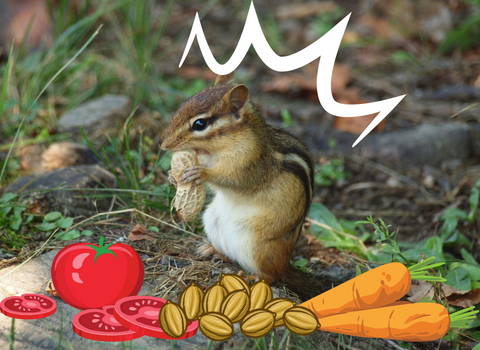
What Do Chipmunks Eat in the Wild
Wild chipmunks are woodland or forest dwellers and skilled climbers, but they prefer to live in nests made in thick bushes, hollow tree logs, and underground burrows. These little creatures are mostly active at dusk and dawn.
They spend most of their time looking for food on the ground, but they will climb trees to eat nuts and acorns as well. Chipmunks like to gather food and bring it back to their nest or burrow. These little guys also bury nuts and other foods. When they get hungry, they will return to collect their supply.
When wild chipmunks hibernate during winter, they usually stay in a dormant, sluggish state. Since do not build up enormous amounts of body fat to survive through the chilly winter months, they gather and store food in the nest or chipmunk’s burrow.
They also store extra food in their cheeks, so they will have something to eat later. That way, they will not starve throughout the winter. These little critters will sleep for a couple of days and come out briefly to eat little food before hibernating again for a brief period. The cycle repeats until spring.
Their digestive tract is unable to properly convert what they eat into nutrients, so the job is left to the chipmunk’s lower digestive tract. But the lower tract cannot absorb nutrients properly, so when they poop, they feed on their waste because it is rich in nutrients.
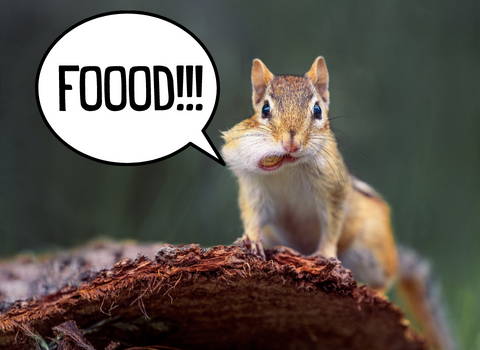
What Pet Chipmunks Eat
Chipmunks should be given a diet that closely resembles what they eat in the wild. What they eat usually depends on where they come from and the species. For instance, pecans and peanuts might be available to wild southern chipmunks, while others may only have access to pine nuts or acorns.
If you want to keep a rescued wild chipmunk from a local area, you need to know the types of food that are available to them. In case you are getting one from a pet store, always ask where the chipmunk came from and the types of food that are available to them in the wild. You also need to keep in mind that these rodents are loners, so putting two chipmunks in the same cage is not advisable. Furthermore, their teeth grow constantly. You should give them a bone or piece of solid wood, so they can file down their teeth.
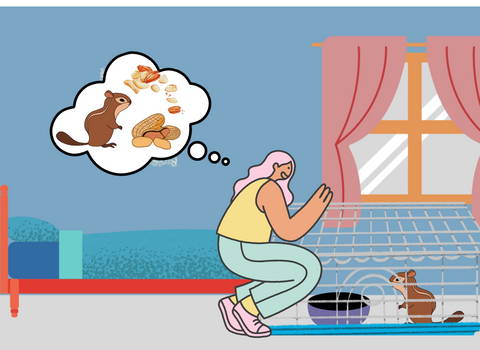
A chipmunk’s diet closely resembles what humans eat. They love tomatoes, squash, strawberries, blackberries, sweet potatoes, bean sprouts, dried apricots, and other fruits and veggies. Therefore, it will be a disaster if they gain access to your garden as they can lay waste on unprotected plants.
Wild chipmunks also eat live food, but it is never a clever idea to feed wrigglers to chipmunks that are bred in captivity. Rescued wild chipmunks catch and feed on small creatures like insects and worms that are found in their enclosure or outdoor cage.
Eating Habits of Chipmunks
Chipmunks look adorable when their cheek pouches are full of food. They do this, so they will have something to eat later. These little rodents also like burying food. If you have a pet chipmunk, you can put layered stuffing at the bottom of their cages to accommodate this behaviour. Also, keep in mind that although their food dish is empty, these little critters may still have a lot of food stashed in their cage.
Unlike their wild counterparts, pet chipmunks will not have enough space to forage and roam. Thus, you should limit their intake of calorie-rich foods like sunflower seeds and peanuts since they might become obese. Instead, give them low-calorie and healthy foods like oats, grapes, almonds, apples, and pine nuts.
Pet chipmunks should eat a low-fat and balanced diet that includes some protein as well as dried and fresh fruit, fresh vegetables, and seeds. They also love:
Pears
Bird Seeds
Walnuts
Peaches
Chestnuts
Oranges
Carrots
Lettuce
Pine Nuts
Tomatoes
For protein, you can add mealworms, cooked chicken, and light dog biscuits. Live mealworms are available in pet stores. In case you do not like putting live wrigglers in their cage, you can give them dried mealworms for a delicious protein shot. Many pet stores and garden centers sell dried mealworms as bird food.
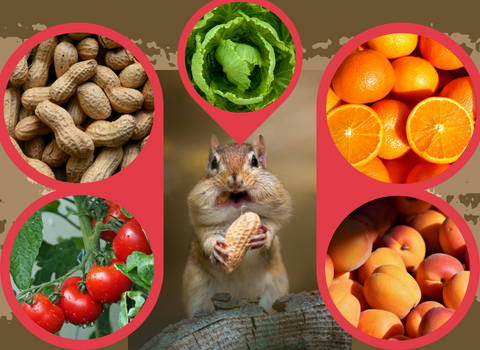
Pet chipmunks that are kept outside become less active in winter. They hibernate for a brief period and then emerge briefly to forage. This action mimics their seasonal behaviour in the wild. During this period, you must reduce their food portion slightly.
If you are keeping a captive-bred chipmunk indoors and do not exhibit this behaviour during winter, do not worry because it is normal. When this happens, you do not have to add mineral and vitamin supplements to their food since they will get nutrients from their diet.
What Newborn Chipmunks Eat
Although it is tempting to keep a wild baby chipmunk as a pet, it is not recommended by the ASPCA. Injured or baby chipmunks should be taken immediately to local rescue shelters for wild animals. Captive-bred mother chipmunks will suckle their babies until they are weaned. Like their parents, baby chipmunks will eagerly look for food in their cages once weaned. Adult and weaned chipmunks feed on the same foods.
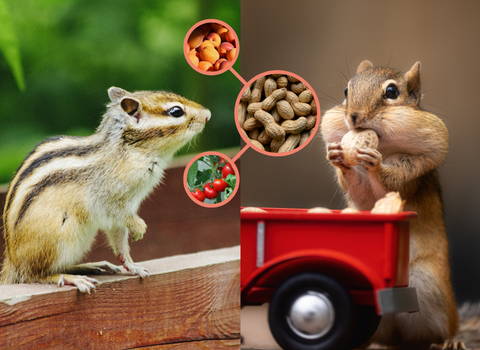
What You Should Not Feed Chipmunks
Certain foods can harm chipmunks, while others can be toxic for them. For example, processed foods are not good for chipmunks. Crisps, bread, cakes, biscuits, and other junk foods are unhealthy and can result in obesity. Candies and sweets can also cause obesity because these foods contain a lot of calories.
Chipmunks cannot stand strong or pungent smells, so they do not like garlic and onions. They also avoid plants that are toxic and have fragrances and hairy leaves. French marigolds and daffodils are good examples of these plants.
Chipmunks do not like the taste and smell of daffodils as it has lycorine which is toxic for them. French marigold has pungent leaves that contain terpenes, which repels chipmunks. It might be tempting to feed them junk food, but you should refrain from doing so.
Overall, you can feed them plants but stay away from the poisonous kind. And of course, it is tempting to feed them from your hands. Wildlife experts will say that hand-feeding chipmunks are not a clever idea but with patience and proper training, you can get them to eat nuts and other foods from your hands.

